SIMULATION - (Topic 3)
A network technician needs to resolve some issues with a customer's SOHO network. The customer reports that some of the PCs are not connecting to the network, while others appear to be working as intended.
INSTRUCTIONS
Troubleshoot all the network components.
Review the cable test results first, then diagnose by clicking on the appropriate PC, server, and Layer 2 switch.
Identify any components with a problem and recommend a solution to correct each problem.
If at any time you would like to bring back the initial state of the simulation, please click the Reset All button.
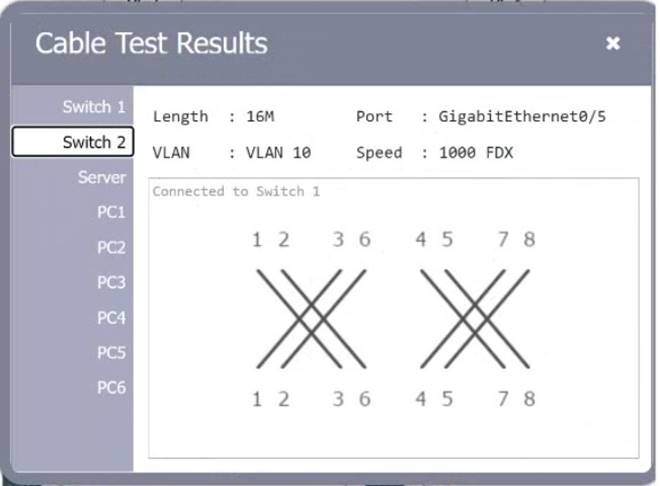


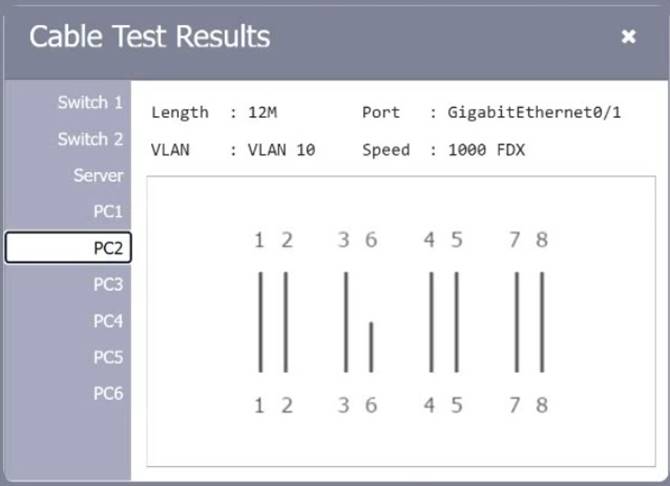
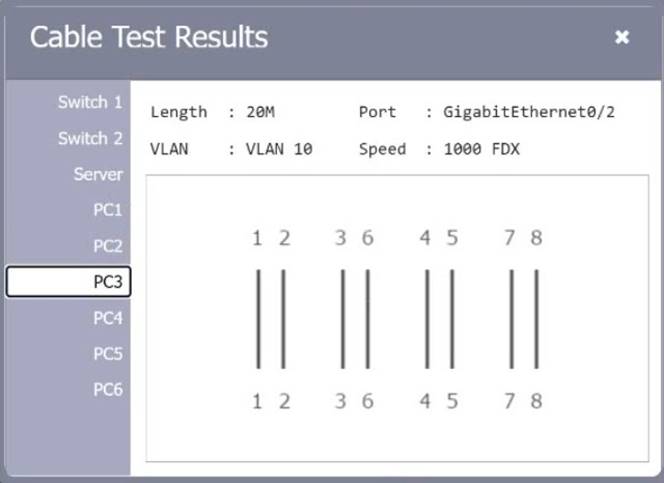
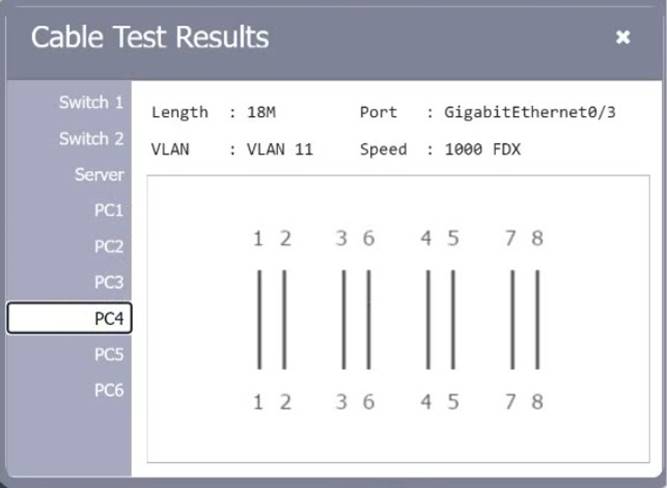
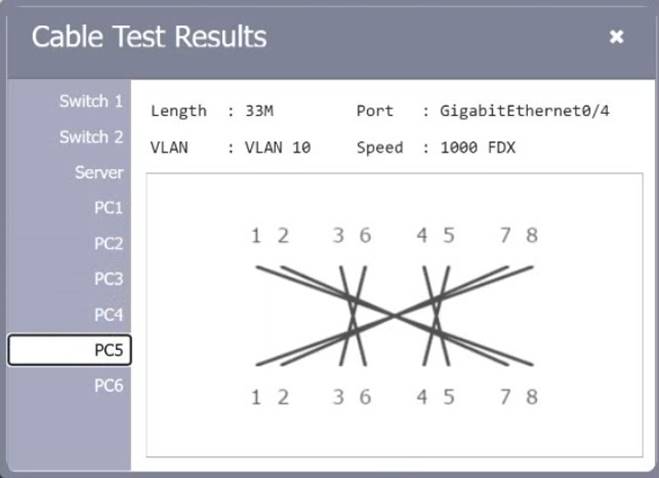
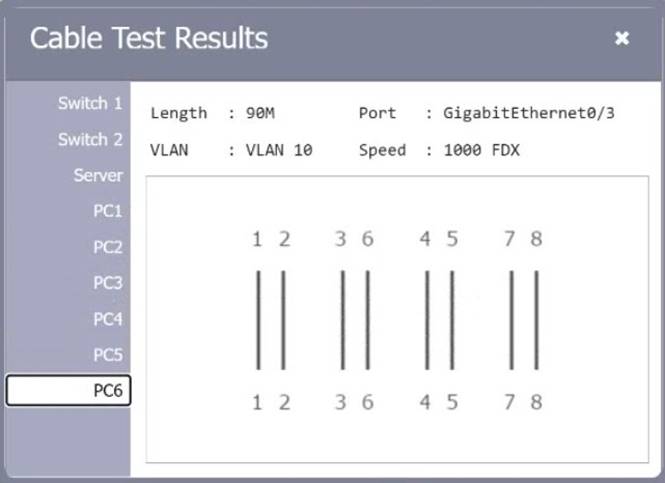
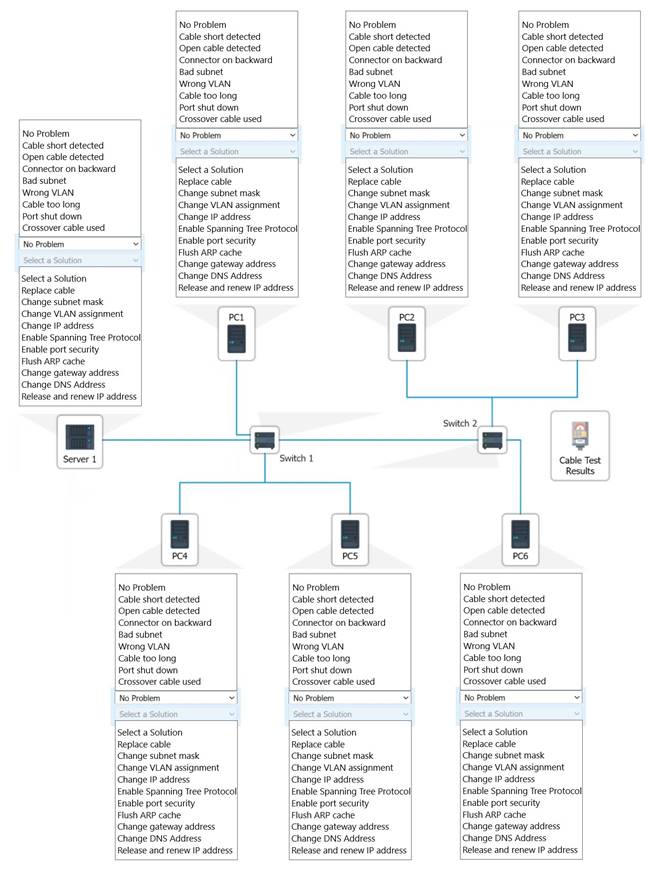
Solution: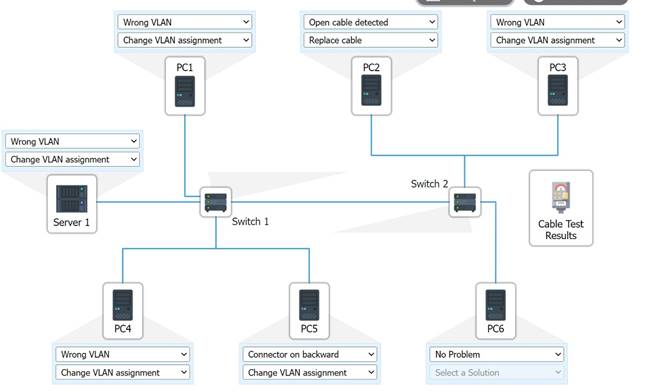
Does this meet the goal?
Correct Answer:
A
- (Topic 3)
Which of the following types of data center architectures will MOST likely be used in a large SDN and can be extended beyond the data center?
Correct Answer:
D
The type of data center architecture that will most likely be used in a large SDN and can be extended beyond the data center is spine and leaf. Spine and leaf is a network topology that consists of two layers of switches: spine switches and leaf switches. Spine switches are interconnected to each other and form the core of the network, while leaf switches are connected to each spine switch and form the access layer of the network. Spine and leaf topology provides high scalability, performance, and flexibility for data center networks, especially for SDN (Software Defined Networking) environments that require dynamic traffic flows and virtualization. References: CompTIA Network+ N10-008 Certification Study Guide, page 16; The Official CompTIA Network+ Student Guide (Exam N10-008), page 1-9.
- (Topic 3)
A network administrator views a network pcap and sees a packet containing the following:
Which of the following are the BEST ways for the administrator to secure this type of traffic? (Select TWO).
Correct Answer:
CD
The packet shown in the image is an SNMP (Simple Network Management Protocol) packet, which is used to monitor and manage network devices. SNMP uses community strings to authenticate requests and responses between SNMP agents and managers. However, community strings are sent in clear text and can be easily intercepted by attackers. Therefore, one way to secure SNMP traffic is to set a private community string that is not the default or well-known value. Another way to secure SNMP traffic is to use SNMPv3, which is the latest version of the protocol that supports encryption and authentication of SNMP messages.
References: CompTIA Network+ Certification Exam Objectives Version 7.0 (N10-007), Objective 2.5: Given a scenario, use remote access methods.
- (Topic 3)
A customer has an attached USB printer that needs to be shared with other users. The desktop team set up printer sharing. Now, the network technician needs to obtain the necessary information about the PC and share it with other users so they can connect to the printer. Which of the following commands should the technician use to get the required information? (Select TWO).
Correct Answer:
EF
The hostname and ipconfig commands should be used to get the required information about the PC and share it with other users so they can connect to the printer. The hostname command displays the name of the computer on a network. The ipconfig command displays the IP configuration of the computer, including its IP address, subnet mask, default gateway, and DNS servers. These information are necessary for other users to locate and connect to the shared printer on the network. For example, other users can use the UNC path \\hostname\printername or \\ipaddress\printername to access the shared printer. References: [CompTIA Network+ Certification Exam Objectives], How to Share a Printer in Windows 10
- (Topic 3)
Users ate moving back into an office that had been vacant for awhile. Ten workstations are hooked up in the office, but one workstation cannot obtain a link with (he switch. A network engineer checks the documentation and cable labeling, and everything is hooked up as expected. The engineer moves the connection lo a different switchport. but a link still cannot be obtained. When the engineer puts a tone generator on (he infrastructure cable, no tone is heard at the far end. Which of the following issues is the engineer MOST likely trying to find?
Correct Answer:
B
A break in the cable means that there is no electrical continuity between the two ends of the cable, which prevents the signal from reaching the switch. A tone generator is a device that sends an audible signal through the cable, and if no tone is heard at the far end, it indicates a break in the cable.

